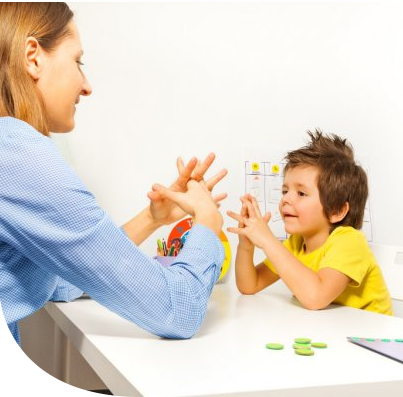Autism is a complex developmental disability that typically appears during the first three years of life. It is the result of a neurological disorder that affects the normal functioning of the brain, impacting development in the areas of social interaction and communication skills. Both children and adults with autism typically show difficulties in verbal and non-verbal communication, social interactions and leisure or play activities. PDD/ ASD which is a Developmental disorder has classic ‘Triad of impairments
Autism is a complex developmental disability that typically appears during the first three years of life. It is the result of a neurological disorder that affects the normal functioning of the brain, impacting development in the areas of social interaction and communication skills. Both children and adults with autism typically show difficulties in verbal and non-verbal communication, social interactions and leisure or play activities. PDD/ ASD which is a Developmental disorder has classic ‘Triad of impairments

The term “Pervasive Development Disorders” refers to a group of conditions that involve delays in the development of many basic skills, most notably the ability to socialize with others, to communicate and to use imagination.
The five types disorders under the PDD/ ASD umbrella are:
Age in Months - 6
Crying is difficult to interpret.
Limited or unusual babbling. No imitation of sounds, gestures or expression
Age in Months - 12
First word may appear, but often not used
meaningfully. Frequent loud crying, remains difficult to interpret.
Age in Months - 24
Usually fewer than 15 words.
Words appear and then drop out. Gestures do not develop.
Age in Months - 28
Word combinations are rare.
May echo phrases but no creative language in terms of rhythm, tone or stress. Poor
articulation in about half of speaking children.
Age in Months - 48
Few children combine 2-3 words creatively.
Presence of echolalia. Mimics TV commands. Makes requests.
Brook and Bowler (1992) listed some of the semantic pragmatic deficits presented by children with Autism.
Problems encoding meaning relevant to conversation
Difficulty with verbal/nonverbal cues of partner
Problems initiating or responding to questions
Impaired language comprehension
Literal interpretations of verbal messages
The language of autistic children has been described as overly concrete. (Ricks and Wing,1976)
Verb findings.
Past tense and Present progressive.
Grammatical morphemes and function words are often omitted by these children.
Pronoun difficulty.
Constructing sentences.
For children with Autism, the use of language for communication purpose remains severely impaired inspite of possible developments in other language areas.
They exhibit problems in:
A child affected with childhood disintegrative disorder shows normal development, generally up to an age of 2 years, and he/she acquires "normal development of age-appropriate verbal and nonverbal communication, social relationships, motor, play and self-care skills" comparable to other children of the same age.
However, from around the age of 2 through the age of 10, skills acquired are lost almost completely in at least two of the following six functional areas:
Lack of normal function or impairment also occurs in at least two of the following three areas :
Lipid storage diseases: In this condition, a toxic buildup of excess fats (lipids) takes place in the brain and nervous system.
Subacute sclerosing panencephalitis: Chronic infection of the brain by a form of the measles virus causes subacute sclerosing panencephalitis. This condition leads to brain inflammation and the death of nerve cells.